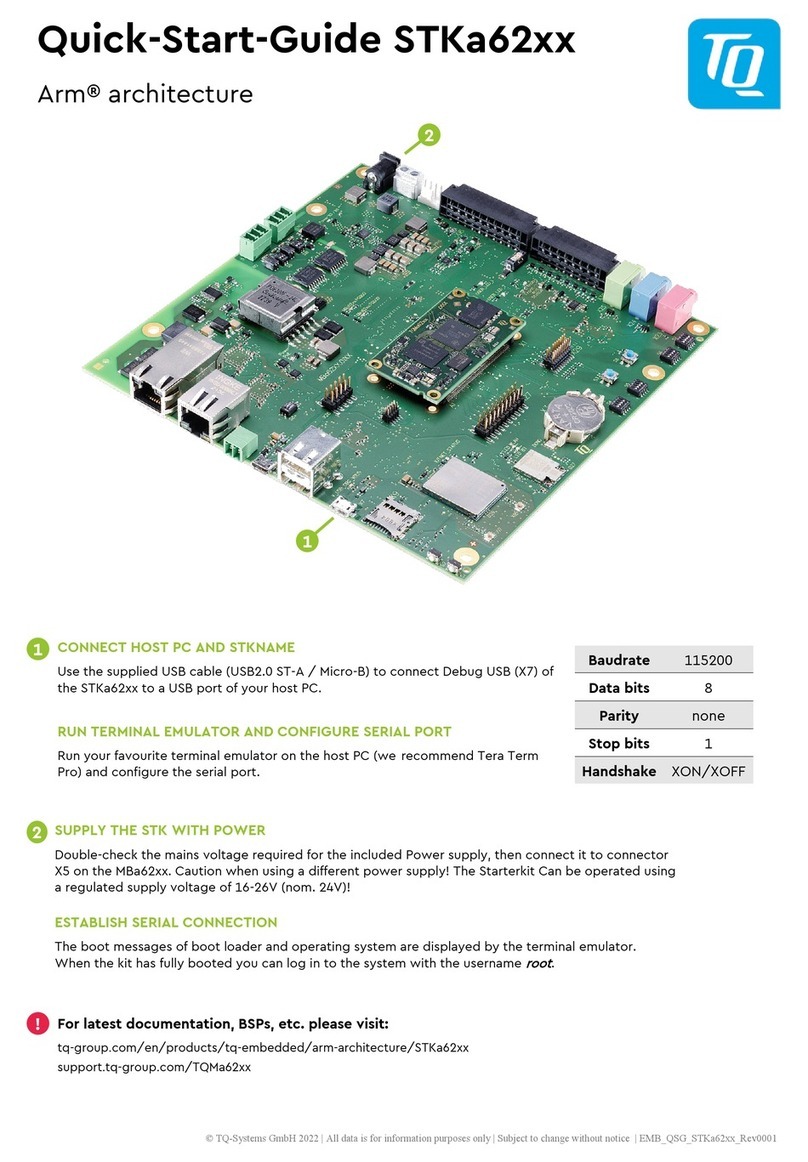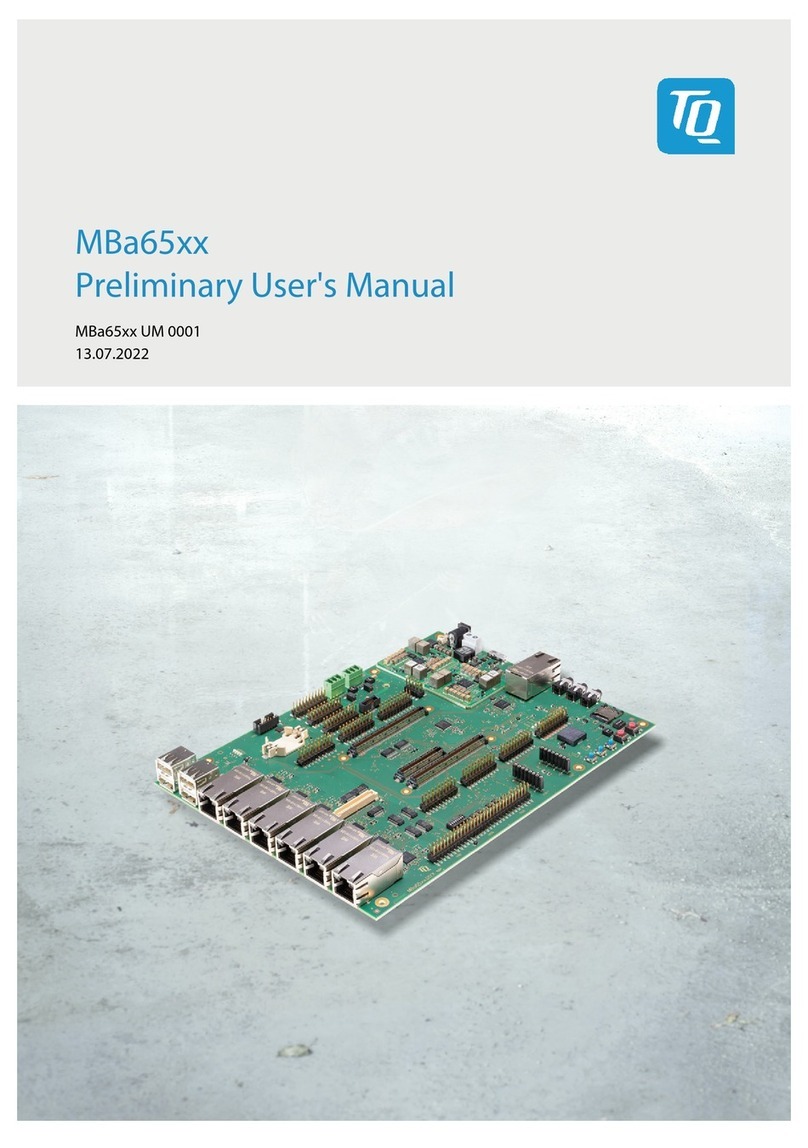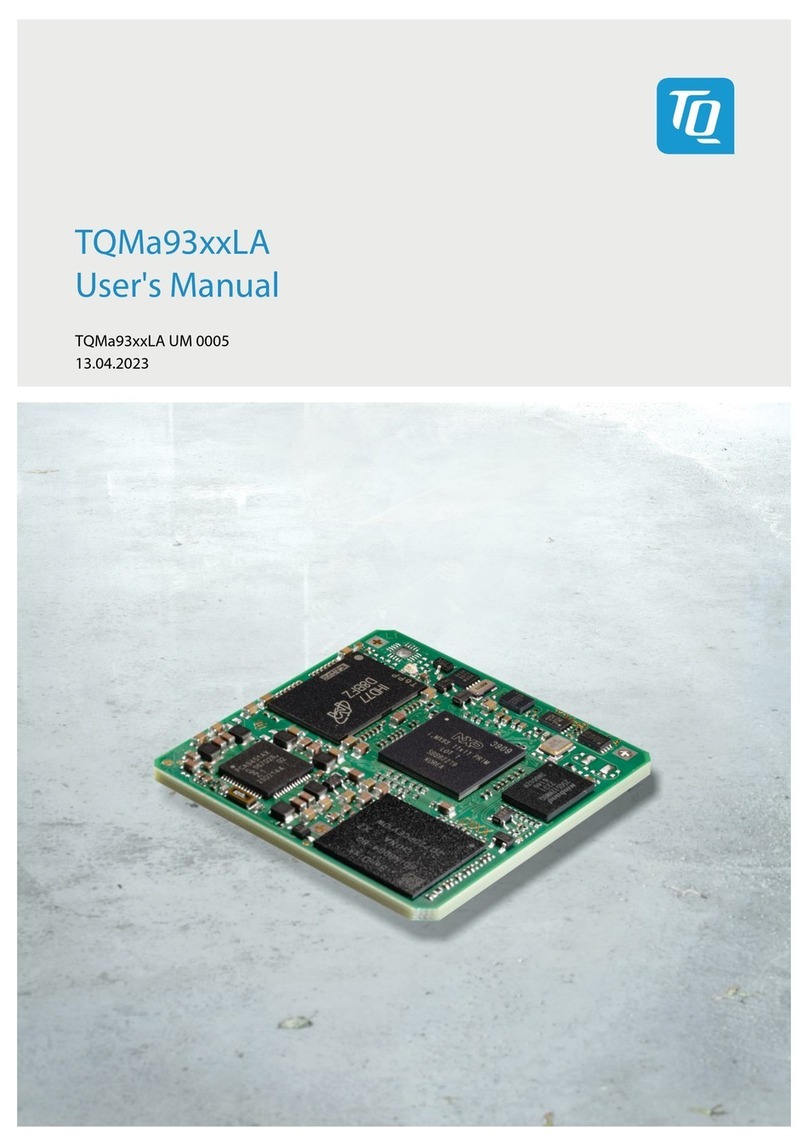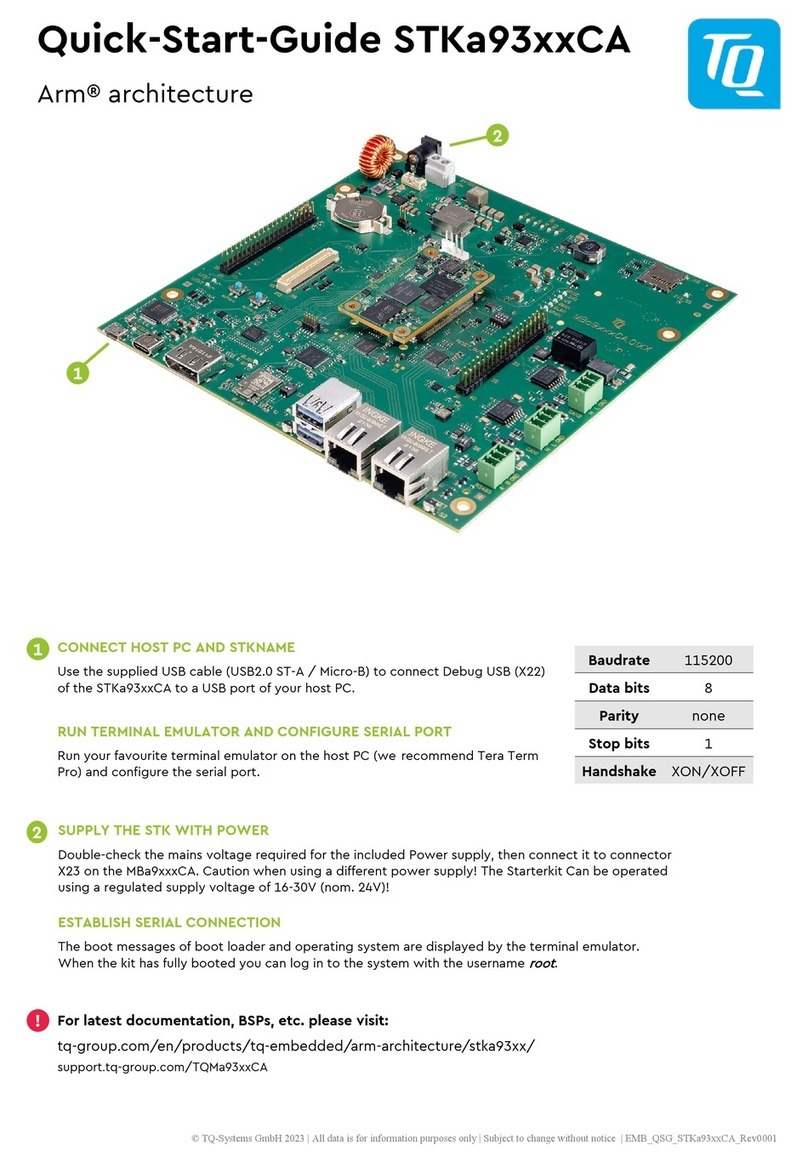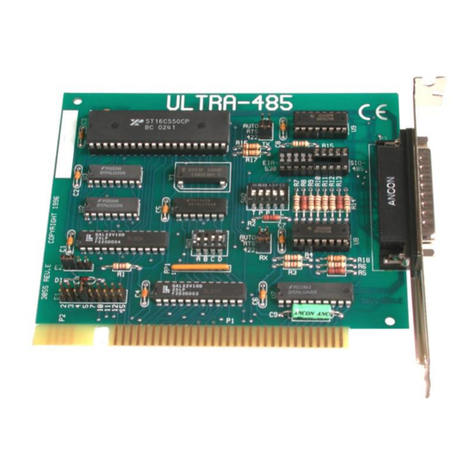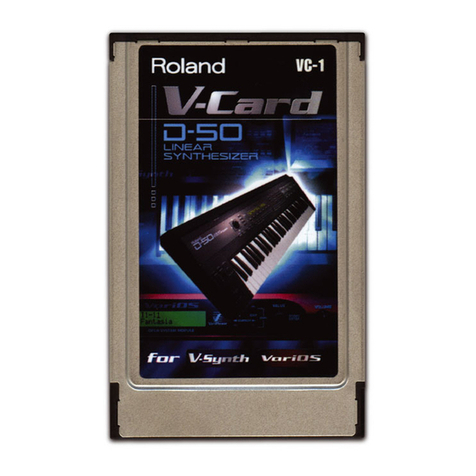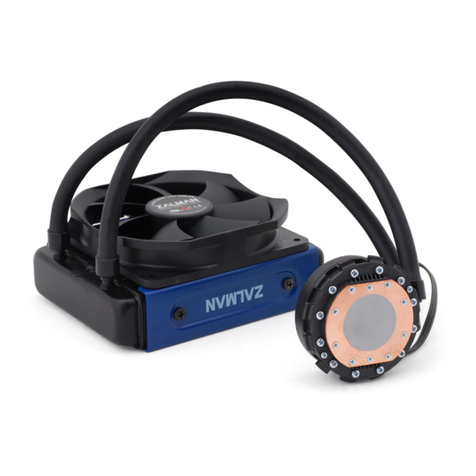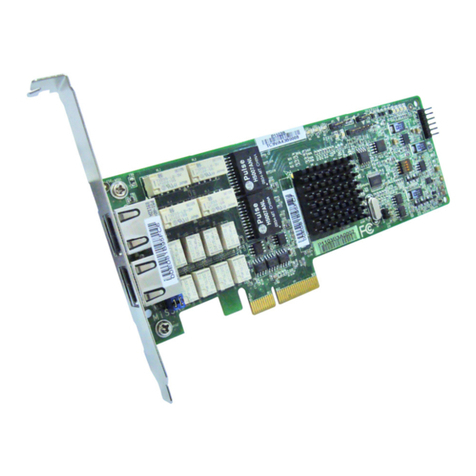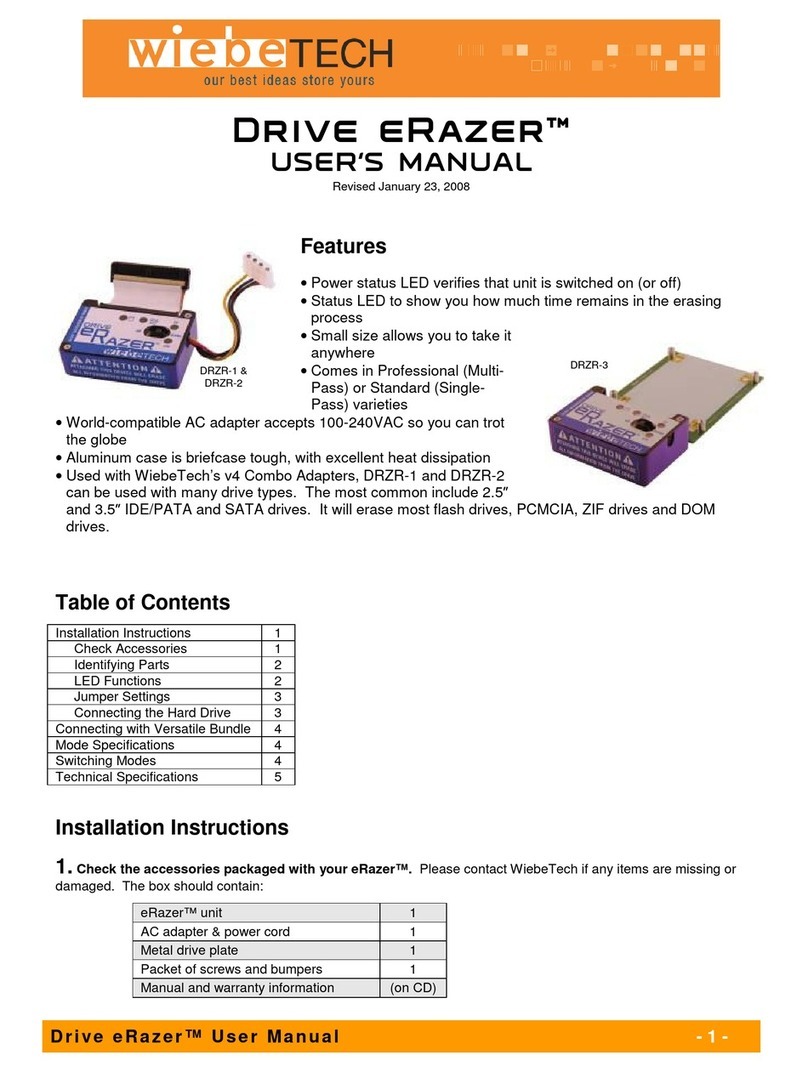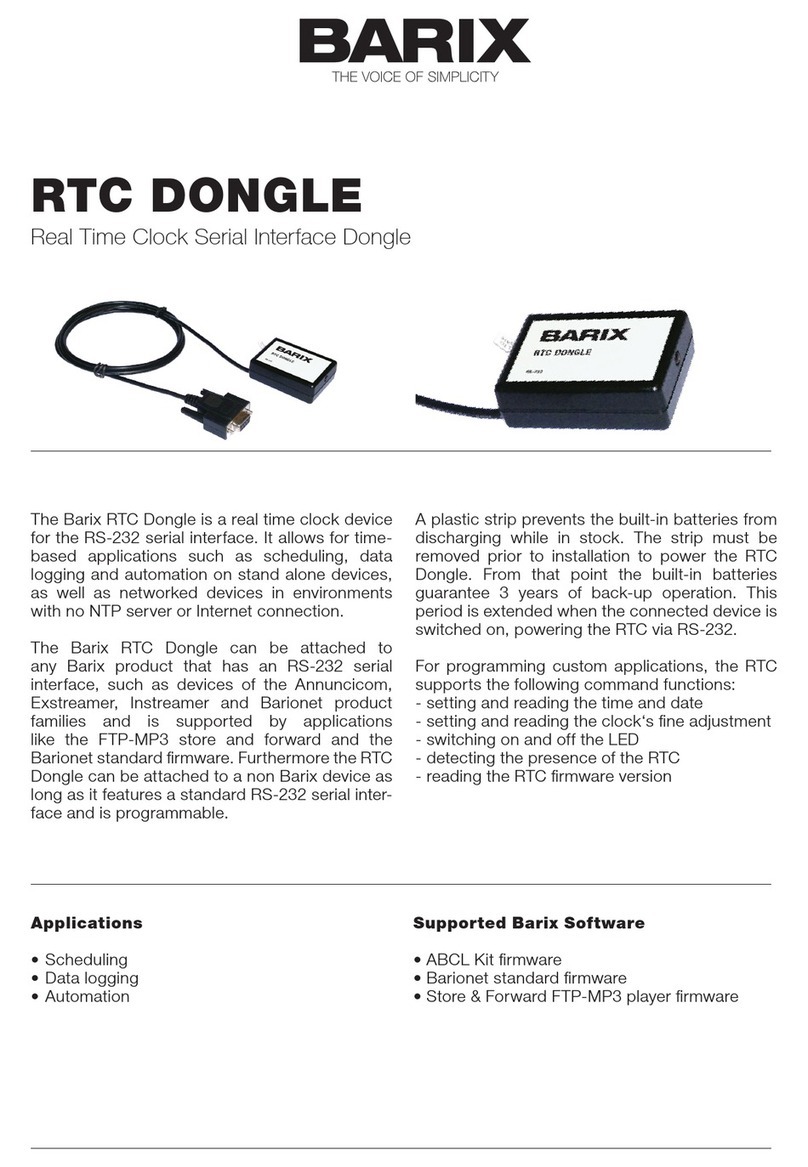TQ TQMa62 L Series User manual

TQMa62xxL
Preliminary User's Manual
TQMa62xxL UM 0001
30.11.2023

Preliminary Preliminary User's Manual l TQMa62xxL UM 0001 l © 2023, TQ-Systems GmbH Page i
TABLE OF CONTENTS
1. ABOUT THIS MANUAL.................................................................................................................................................................1
1.1 Copyright and license expenses..............................................................................................................................................1
1.2 Registered trademarks................................................................................................................................................................1
1.3 Disclaimer .......................................................................................................................................................................................1
1.4 Imprint .............................................................................................................................................................................................1
1.5 Tips on safety.................................................................................................................................................................................2
1.6 Symbols and typographic conventions.................................................................................................................................2
1.7 Handling and ESD tips ................................................................................................................................................................2
1.8 Naming of signals.........................................................................................................................................................................3
1.9 Further applicable documents / presumed knowledge...................................................................................................3
2. BRIEF DESCRIPTION......................................................................................................................................................................4
3. ELECTRONICS.................................................................................................................................................................................5
3.1 System overview...........................................................................................................................................................................5
3.1.1 System architecture / block diagram .....................................................................................................................................5
3.1.2 Functionality..................................................................................................................................................................................5
3.1.3 Pin multiplexing............................................................................................................................................................................6
3.2 System components....................................................................................................................................................................6
3.2.1 Processor derivatives...................................................................................................................................................................6
3.2.2 Booting............................................................................................................................................................................................7
3.2.2.1 Boot source ....................................................................................................................................................................................7
3.2.2.2 Boot device eMMc........................................................................................................................................................................8
3.2.2.3 Boot device NOR-flash ................................................................................................................................................................8
3.2.3 Memory ...........................................................................................................................................................................................9
3.2.3.1 LPDDR4 SDRAM ............................................................................................................................................................................9
3.2.3.2 eMMC...............................................................................................................................................................................................9
3.2.3.3 NOR-Flash .................................................................................................................................................................................... 10
3.2.3.4 EEPROMs ...................................................................................................................................................................................... 10
3.2.4 Clock supply................................................................................................................................................................................ 10
3.2.5 RTC ................................................................................................................................................................................................. 11
3.2.6 Secure Element .......................................................................................................................................................................... 12
3.2.7 Temperature sensor.................................................................................................................................................................. 12
3.2.8 Interfaces...................................................................................................................................................................................... 12
3.2.8.1 GPIO............................................................................................................................................................................................... 12
3.2.8.2 JTAG............................................................................................................................................................................................... 12
3.2.8.3 I2C ................................................................................................................................................................................................... 13
3.2.8.4 UART.............................................................................................................................................................................................. 13
3.2.8.5 EXTINT#......................................................................................................................................................................................... 13
3.2.9 Reset.............................................................................................................................................................................................. 14
3.2.9.1 Reset Options (Input) ............................................................................................................................................................... 14
3.2.9.1.1 TQMa62xxL_HARD_RST#........................................................................................................................................................ 14
3.2.9.1.3 MCU_PORz................................................................................................................................................................................... 15
3.2.9.1.4 MCU_RESETz............................................................................................................................................................................... 15
3.2.9.1.5 RESET_REQz................................................................................................................................................................................. 15
3.2.9.2 Reset Status (Output)............................................................................................................................................................... 15
3.2.9.2.1 PORz_OUT.................................................................................................................................................................................... 15
3.2.9.2.2 MCU_RESETSTATz ..................................................................................................................................................................... 15
3.2.9.2.3 RESETSTATz................................................................................................................................................................................. 15
3.2.9.3 Control signals............................................................................................................................................................................ 15
3.2.9.3.1 TQMa62xxL_PGOOD ................................................................................................................................................................ 15
3.2.9.3.2 VSEL_SD ....................................................................................................................................................................................... 15
3.2.10 Watchdog .................................................................................................................................................................................... 15
3.2.11 Power supply .............................................................................................................................................................................. 16
3.2.11.1 Main power supply ................................................................................................................................................................... 16
3.2.11.2 Overview TQMa62xxL supply ................................................................................................................................................ 16
3.2.11.3 Power sequenzing..................................................................................................................................................................... 17
3.2.11.4 Power modes.............................................................................................................................................................................. 17
3.2.11.5 Power consumption ................................................................................................................................................................. 18
3.3 TQMa62xxL interface................................................................................................................................................................ 18
3.3.1 Pin assignment........................................................................................................................................................................... 18
3.3.2 Pinout TQMa62xxL.................................................................................................................................................................... 20
4. SOFTWARE................................................................................................................................................................................... 38

Preliminary Preliminary User's Manual l TQMa62xxL UM 0001 l © 2023, TQ-Systems GmbH Page ii
5. MECHANICS................................................................................................................................................................................. 39
5.1 TQMa62xxL dimensions and footprint ............................................................................................................................... 39
5.2 TQMa62xxL component placement and labeling........................................................................................................... 40
5.3 Protection against external effects ...................................................................................................................................... 40
5.4 Thermal management ............................................................................................................................................................. 40
5.5 Structural requirements .......................................................................................................................................................... 41
6. SAFETY REQUIREMENTS AND PROTECTIVE REGULATIONS .......................................................................................... 42
6.1 EMC................................................................................................................................................................................................ 42
6.2 ESD................................................................................................................................................................................................. 42
6.3 Operational safety and personal security .......................................................................................................................... 42
6.4 Climatic and operational conditions ................................................................................................................................... 42
6.5 Intended Use............................................................................................................................................................................... 42
6.6 Export Control and Sanctions Compliance ....................................................................................................................... 43
6.7 Warranty....................................................................................................................................................................................... 43
6.8 Reliability and service life........................................................................................................................................................ 43
6.9 Environment protection.......................................................................................................................................................... 43
6.9.1 RoHS .............................................................................................................................................................................................. 43
6.9.2 WEEE®............................................................................................................................................................................................ 43
6.10 REACH®......................................................................................................................................................................................... 43
6.11 EuP ................................................................................................................................................................................................. 44
6.12 Statement on California Proposition 65............................................................................................................................. 44
6.13 Battery........................................................................................................................................................................................... 44
6.14 Packaging .................................................................................................................................................................................... 44
6.15 Other entries............................................................................................................................................................................... 44
7. APPENDIX..................................................................................................................................................................................... 45
7.1 Acronyms and definitions....................................................................................................................................................... 45
7.2 References ................................................................................................................................................................................... 47

Preliminary Preliminary User's Manual l TQMa62xxL UM 0001 l © 2023, TQ-Systems GmbH Page iii
TABLE DIRECTORY
Table 1: Terms and Conventions .............................................................................................................................................................2
Table 2: AM62x derivatives (Source: Texas Instruments) ................................................................................................................6
Table 3: Selecting the General Boot Configuration............................................................................................................................7
Table 4: Boot device selection eMMC.....................................................................................................................................................8
Table 5: Selection of the boot device NOR flash .................................................................................................................................8
Table 6: eMMC Flash modes......................................................................................................................................................................9
Table 7: NOR-Flash modes...................................................................................................................................................................... 10
Table 8: JTAG signals ................................................................................................................................................................................ 13
Table 9: I2C address assignment on the module............................................................................................................................. 13
Table 10: Supply voltages.......................................................................................................................................................................... 16
Table 11: Current consumption TQMa62xx......................................................................................................................................... 18
Table 12: Pinout............................................................................................................................................................................................ 20
Table 13: Climate and operational conditions industrial temperature range........................................................................... 42
Table 14: Acronyms..................................................................................................................................................................................... 45
Table 15: Further applicable documents.............................................................................................................................................. 47

Preliminary Preliminary User's Manual l TQMa62xxL UM 0001 l © 2023, TQ-Systems GmbH Page iv
FIGURE DIRECTORY
Figure 1: Block diagram AM62x .................................................................................................................................................................4
Figure 2: Block diagram TQMa62xxL........................................................................................................................................................5
Figure 3: Block diagram boot strapping..................................................................................................................................................7
Figure 4: Block diagram DDR3L SDRAM connection...........................................................................................................................9
Figure 5: Block diagram eMMC flash interface......................................................................................................................................9
Figure 6: Block diagram NOR-Flash........................................................................................................................................................ 10
Figure 7: Block diagram clock supply.................................................................................................................................................... 10
Figure 8: Block diagram RTC .................................................................................................................................................................... 11
Figure 9: Block diagram SEC..................................................................................................................................................................... 12
Figure 10: Block diagram JTAG.................................................................................................................................................................. 12
Figure 11: Block diagram I2C bus on the TQMa62xx .......................................................................................................................... 13
Figure 12: Block diagram Reset ................................................................................................................................................................. 14
Figure 13: Block diagram power supply ................................................................................................................................................. 16
Figure 14: Recommended power up sequence ................................................................................................................................... 17
Figure 15: Pad placement ........................................................................................................................................................................... 19
Figure 16: Dimensions TQMa62xxL.......................................................................................................................................................... 39
Figure 17: TQMa62xxL top view................................................................................................................................................................ 40
REVISION HISTORY
Rev.
Date
Name
Pos.
Modification
0001
30.11.2023
M. Kreuzer
All
Initial release

Preliminary Preliminary User's Manual l TQMa62xxL UM 0001 l © 2023, TQ-Systems GmbH Page 1
1. ABOUT THIS MANUAL
1.1 Copyright and license expenses
Copyright protected © 2023 by TQ-Systems GmbH.
This Preliminary User's Manual may not be copied, reproduced, translated, changed or distributed, completely or partially in
electronic, machine readable, or in any other form without the written consent of TQ-Systems GmbH.
The drivers and utilities for the components used as well as the BIOS are subject to the copyrights of the respective
manufacturers. The licence conditions of the respective manufacturer are to be adhered to.
Bootloader-licence expenses are paid by TQ-Systems GmbH and are included in the price.
Licence expenses for the operating system and applications are not taken into consideration and must be calculated / declared
separately.
1.2 Registered trademarks
TQ-Systems GmbH aims to adhere to copyrights of all graphics and texts used in all publications, and strives to use original
or license-free graphics and texts.
All brand names and trademarks mentioned in this Preliminary User's Manual, including those protected by a third party, unless
specified otherwise in writing, are subjected to the specifications of the current copyright laws and the proprietary laws of the
present registered proprietor without any limitation. One should conclude that brand and trademarks are rightly protected by a
third party.
1.3 Disclaimer
TQ-Systems GmbH does not guarantee that the information in this Preliminary User's Manual is up-to-date, correct, complete or
of good quality. Nor does TQ-Systems GmbH assume guarantee for further usage of the information. Liability claims against TQ-
Systems GmbH, referring to material or non-material related damages caused, due to usage or non-usage of the information
given in this Preliminary User's Manual, or due to usage of erroneous or incomplete information, are exempted, as long as there
is no proven intentional or negligent fault of TQ-Systems GmbH.
TQ-Systems GmbH explicitly reserves the rights to change or add to the contents of this Preliminary User's Manual or parts of it
without special notification.
Important Notice:
Before using the Starterkit MBa62xx or parts of the schematics of the MBa62xx, you must evaluate it and determine if it is suitable
for your intended application. You assume all risks and liability associated with such use. TQ-Systems GmbH makes no other
warranties including, but not limited to, any implied warranty of merchantability or fitness for a particular purpose. Except where
prohibited by law, TQ-Systems GmbH will not be liable for any indirect, special, incidental or consequential loss or damage
arising from the usage of the Starterkit MBa62xx or schematics used, regardless of the legal theory asserted.
1.4 Imprint
TQ-Systems GmbH
Gut Delling, Mühlstraße 2
D-82229 Seefeld
Tel: +49 8153 9308 0
Fax: +49 8153 9308 4223
E-Mail: Info@TQ-Group
Web: TQ-Group

Preliminary User's Manual l TQMa62xxL UM 0001 l © 2023, TQ-Systems GmbH Page 2
1.5 Tips on safety
Improper or incorrect handling of the product can substantially reduce its life span.
1.6 Symbols and typographic conventions
Table 1: Terms and Conventions
Symbol
Meaning
This symbol represents the handling of electrostatic-sensitive devices and / or components. These
components are often damaged / destroyed by the transmission of a voltage higher than about 50 V.
A human body usually only experiences electrostatic discharges above approximately 3,000 V.
This symbol indicates the possible use of voltages higher than 24 V.
Please note the relevant statutory regulations in this regard.
Non-compliance with these regulations can lead to serious damage to your health and also cause
damage / destruction of the component.
This symbol indicates a possible source of danger. Acting against the procedure described can lead to
possible damage to your health and / or cause damage / destruction of the material used.
This symbol represents important details or aspects for working with TQ-products.
Command
A font with fixed-width is used to denote commands, file names, or menu items.
1.7 Handling and ESD tips
General handling of your TQ-products
The TQ-product may only be used and serviced by certified personnel who have taken note of the
information, the safety regulations in this document and all related rules and regulations.
A general rule is: do not touch the TQ-product during operation. This is especially important when
switching on, changing jumper settings or connecting other devices without ensuring beforehand
that the power supply of the system has been switched off.
Violation of this guideline may result in damage / destruction of the TQMa62xxL and be dangerous
to your health.
Improper handling of your TQ-product would render the guarantee invalid.
Proper ESD handling
The electronic components of your TQ-product are sensitive to electrostatic discharge (ESD).
Always wear antistatic clothing, use ESD-safe tools, packing materials etc., and operate your TQ-
product in an ESD-safe environment. Especially when you power up the TQMa62xxL or the Starterkit,
change jumper settings, or connect other devices.

Preliminary Preliminary User's Manual l TQMa62xxL UM 0001 l © 2023, TQ-Systems GmbH Page 3
1.8 Naming of signals
A hash mark (#) at the end of the signal name indicates a low-active signal.
Example: RESET#
If a signal can switch between two functions and if this is noted in the name of the signal, the low-active function is marked with
a hash mark and shown at the end.
Example: C / D#
If a signal has multiple functions, the individual functions are separated by slashes when they are important for the wiring.
The identification of the individual functions follows the above conventions.
Example: WE2# / OE#
1.9 Further applicable documents / presumed knowledge
•Specifications and manuals of the modules used:
These documents describe the service, functionality and special characteristics of the module used (incl. BIOS).
•Specifications of the components used:
The manufacturer's specifications of the components used, for example CompactFlash cards, are to be taken note of.
They contain, if applicable, additional information that must be taken note of for safe and reliable operation.
These documents are stored at TQ-Systems GmbH.
•Chip errata:
It is the user's responsibility to make sure all errata published by the manufacturer of each component are taken note of.
The
•Software behaviour:
No warranty can be given, nor responsibility taken for any unexpected software behaviour due to deficient components.
•General expertise:
Expertise in electrical engineering / computer engineering is required for the installation and the use of the device.
The following documents are required to fully comprehend the following contents:
•MBa62xx circuit diagram
•MBa62xx User's Manual
•Sitara AM62x Data Sheet
•U-Boot documentation: www.denx.de/wiki/U-Boot/Documentation
•PTXdist documentation: www.ptxdist.de
•TQ-Support Wiki: support.tq-group.com/doku.php?id=en:arm:tqmax62xx

Preliminary User's Manual l TQMa62xxL UM 0001 l © 2023, TQ-Systems GmbH Page 4
2. BRIEF DESCRIPTION
The TQMa62xxL is a universal TQ-LGA mini module based on the TI Sitara family AM62x with ARM Cortex A53 and Cortex M4F
cores.
This Preliminary User's Manual describes the hardware of the TQMa62xxL Rev.010x and refers to some software settings.
It does not replace the AM62x Reference Manual (2).
Figure 1: Block diagram AM62x
(Source: Texas Instruments)
All useful AM62x signals are routed to the TQMa62xxL LGA pads. There are no restrictions for customers using the TQMa62xxL
with respect to an integrated customised design.
Please take note of that not all interfaces can be used simultaneously.

Preliminary Preliminary User's Manual l TQMa62xxL UM 0001 l © 2023, TQ-Systems GmbH Page 5
3. ELECTRONICS
The information provided in this User's Manual is only valid in connection with the tailored boot loader,
which is preinstalled on the TQMa62xxL, and the BSP provided by TQ-Systems GmbH, see also section 4.
3.1 System overview
3.1.1 System architecture / block diagram
Figure 2: Block diagram TQMa62xxL
3.1.2 Functionality
The following key functions are implemented on the TQMa62xxL:
•Mini module with form factor 38 mm x 38 mm
•AM62x CPU (up to 4 x A53 and/ 1 x M4F)
•16-bit LPDDR4 memory
•1x eMMC NAND-Flash 5.1
•1x QSPI-NOR-Flash (optional)
•Clock supply
•EEPROM (optional)
•Real-time clock (optional)
•Secure Element chip (optional)
•Temperature sensor (optional)
•EEPROM (TQ-Data)
•Supervisor
•Single Power Supply 3.3 V
•Availability of all essential signals of the CPU at the LGA pads

Preliminary User's Manual l TQMa62xxL UM 0001 l © 2023, TQ-Systems GmbH Page 6
3.1.3 Pin multiplexing
The pin multiplexing of the AM62x permits to use many pins for different interfaces.
The information provided in this User's Manual is based on the BSP provided by TQ-Systems GmbH.
Attention: Destruction or malfunction
Many AM62x pins can be configured as different function.
Please take note of the information in the AM62 data sheet (1) concerning the configuration of these
pins before integration / start-up of your carrier board / Starter kit.
Please also take note of the latest AM62x errata (3).
3.2 System components
3.2.1 Processor derivatives
Depending on the TQMa62xxL version, one of the following AM62x derivatives is assembled:
AM6254 / AM6252 / AM6251 / AM6234 / AM6232 / AM6231
Table 2: AM62x derivatives (Source: Texas Instruments)

Preliminary Preliminary User's Manual l TQMa62xxL UM 0001 l © 2023, TQ-Systems GmbH Page 7
3.2.2 Booting
3.2.2.1 Boot source
The boot source is selected via the boot strapping pins of the AM62x. The signals are directly routed to the module connectors
and will be available again as GPIO after reading the boot configuration.
After the release of MCU_PORz the boot configuration is read in at the BOOTMODE[15:0] pins. Independent of the boot device,
the ROM bootloader is executed first, which assists in reading and executing the application code. The data can be read and
loaded either directly from the memory device or by a peripheral.
The following figure shows the implementation of boot strapping on the module:
Figure 3: Block diagram boot strapping
According to the Reference Manual (2) the general boot configuration at the TQMa62xxL can be set as follows:
Table 3: Selecting the General Boot Configuration
Boot configuration pin
Setting
TQMa62xxL
BOOTMODE[15:14]
Reserved, fixed to 0
00
BOOTMODE[13:10]
Select the backup boot mode, if primary boot device failed
Don't care
BOOTMODE[9:3]
See following chapters for boot devices
-
BOOTMODE[2:0]
Ref Clock Select:
000 = 19.2 MHz
001 = 20 MHz
010 = 24 MHz
011 = 25 MHz
100 = 26 MHz
101 = 27 MHz
110 = Reserved
111 = Reserved
011
Attention: Malfunction
All BOOTMODE[15:00] signals must have either a pullup (to V_1V8) or pulldown (to Ground). Undefined
levels can lead to a malfunction during booting.

Preliminary User's Manual l TQMa62xxL UM 0001 l © 2023, TQ-Systems GmbH Page 8
3.2.2.2 Boot device eMMc
Table 4: Boot device selection eMMC
Boot configuration pin
Setting
TQMa62xxL
BOOTMODE[9]
Port: MMCSD Port 0 (8 bit width)
This bit must be set to 0
000
BOOTMODE[8]
Reserved
BOOTMODE[7]
0 = Filesystem Mode
1 = Raw Mode
BOOTMODE[6:3]
Primary Boot Mode:
0000 = Reserved
0001 = OSPI
0010 = QSPI
0011 = SPI
0100 = Ethernet RGMII
0101 = Ethernet RMII
0110 = I2C
0111 = UART
1000 = MMCSD boot
1001 = eMMC
1010 = USB
1011 = GPMC NAND
1100 = GPMC NOR
1101 = PCIe
1110 = xSPI
1111 = No-boot/Dev boot
1000
3.2.2.3 Boot device NOR-flash
Table 5: Selection of the boot device NOR flash
Boot configuration pin
Setting
TQMa62xxL
BOOTMODE9
Reserved, fixed to 0
Don't Care
BOOTMODE8
SPI mode:
0 = SPI Mode 0
1 = SPI Mode 3
1
BOOTMODE7
Chip-Select:
0 = Boot-Flash is on CS0
1 = Boot-Flash is on CS1
0
BOOTMODE[6:3]
Primary Boot Mode:
0000 = Reserved
0001 = OSPI
0010 = QSPI
0011 = SPI
0100 = Ethernet RGMII
0101 = Ethernet RMII
0110 = I2C
0111 = UART
1000 = MMCSD card
1001 = eMMC
1010 = USB
1011 = GPMC NAND
1100 = GPMC NOR
1101 = PCIe
1110 = xSPI
1111 = No-boot/Dev boot
0011
Further boot configurations can be found in the Reference Manual (2).
Besides the mentioned boot configurations above, it is recommended to consider an alternative boot source during
development, e.g. USB boot or no-boot mode for JTAG debug.

Preliminary Preliminary User's Manual l TQMa62xxL UM 0001 l © 2023, TQ-Systems GmbH Page 9
Note: Update
When designing a mainboard, it is recommended to plan a redundant update concept for software
updates in the field. Furthermore, it is recommended to switch the conversion of the boot strap pins to
high impedance after reading in.
3.2.3 Memory
3.2.3.1 LPDDR4 SDRAM
The TQMa62xxL has an LPDDR4 memory with the use of in-line ECC:
•16-bit bus width with optional ECC (8-bit data + 8-bit ECC)
•Up to 1600 Mbps = 800 MHz
•1 GByte (=8 Gbit) / 2 GByte (=16 Gbit)
Figure 4: Block diagram DDR3L SDRAM connection
3.2.3.2 eMMC
An eMMC is available to the TQMa62xxL as non-volatile data memory for programs and data (e.g. boot loader, operating system).
The used MMC0 signals are not available to the Pinout.
•MMC0 Interface is connected to the eMMC Flash
•8 / 16 / 32 / 64 GByte
Figure 5: Block diagram eMMC flash interface
The TQMa62xxL supports the following transmission modes:
Table 6: eMMC Flash modes
Mode
1-bit
4-bit
8-bit
Note
Default Speed
n/a
n/a
n/a
High Speed
n/a
n/a
Yes
Boot process
HS200
n/a
n/a
Yes
U-boot / Linux
HS400
n/a
n/a
n/a
MMCSD not supported features

Preliminary User's Manual l TQMa62xxL UM 0001 l © 2023, TQ-Systems GmbH Page 10
3.2.3.3 NOR-Flash
A NOR-Flash on the TQMa62xxL is available as non-volatile memory. The used OSPI0 signals are not available to the pinout.
•OSPI0 Interface is connected to the NOR Flash
•The NOR-Flash variants Quad SPI Flash and Octal SPI Flash are usable
•512 / 1024 / 2048 Mbit
Figure 6: Block diagram NOR-Flash
The NOR-Flash variants Quad SPI Flash and Octal SPI Flash are usable. The TQMa62xxL supports the following transmission
modes:
Table 7: NOR-Flash modes
Mode
Read
Write
Note
Extended SPI (SDR)
1-4-4
1-4-4
Clock = max. 83.33 MHz
3.2.3.4 EEPROMs
I2C EEPROMs are provided on the TQMa62xxL for non-volatile storage. A distinction is made here between:
•Customer data, freely accessible
•TQ manufacturing data ( Serial Number, MAC, ...)
All I²C slave address and bus structure are summarized in chapter 3.2.8.3.
3.2.4 Clock supply
The clock supply of the TQMa62xxL is represented as follows:
Figure 7: Block diagram clock supply

Preliminary Preliminary User's Manual l TQMa62xxL UM 0001 l © 2023, TQ-Systems GmbH Page 11
To get the module executable only with a 3.3 V supply, MCU_OSC0_XO / XI and WKUP_LFOSC_XO / XI were implemented as
clock on the module. The remaining clock inputs can either be derived from the system clock or fed externally via the module
connectors, as an example the following clocks can be fed externally:
•EXT_REFCLK1
•MCU_EXT_REFCLK0 (optional external System Clock inputs)
•CPTS0_RFT_CLK (optional CPTS Reference Clock input)
•AUDIO_EXT_REFCLK0/1 (optional, External Clock input to McASP)
Further information can be obtained from the associated data sheets (1).
3.2.5 RTC
An optional RTC (NXP PCF85063A) can be equipped on the TQMa62xx. The connection is realized as follows:
•The RTC can be supplied from the base board via V_RTC_IN. V_RTC_IN = 2.0 V to 5.5V
•RTC_INT# and RTC_CLKOUT is accessible at the module connectors.
•RTC_CLKOUT is only activated as soon as the TQMa62xxL is supplied with V_3V3_IN.
•I2C is connected via I2C0 (I²C addresses are described in chapter 3.2.8.3)
Figure 8: Block diagram RTC
Note: Equipping the base board
The RTC is supplied internally by a LDO (1.8V) via V_RTC_IN. This allows the user an easy use of Gold-
Caps or Coin cells on the main board.

Preliminary User's Manual l TQMa62xxL UM 0001 l © 2023, TQ-Systems GmbH Page 12
3.2.6 Secure Element
A Secure Element Chip can optionally be fitted on the TQMa62xx. The connection can be seen in the following figure:
Figure 9: Block diagram SEC
The SE050E2HQ1/Z01Z3 from NXP is used as the secure element. All I²C addresses are described in chapter 3.2.8.3.
3.2.7 Temperature sensor
A temperature sensor (TI TMP1075DSGR) is placed on the TQMa62xxL to monitor the module temperature.
The over temperature output (TEMP_ALERT) of the sensor is available at the module connectors as an open drain output.
The I²C addresses are described in chapter 3.2.8.3.
3.2.8 Interfaces
In general, except for the memory connection, all IO pins of the CPU are provided at the module connectors.
For further information about the interfaces and the pin multiplexing refer to the CPU Reference Manual (2).
3.2.8.1 GPIO
Besides their interface function, most AM62x pins can also be used as GPIOs. Details are to be taken from the AM62x Data Sheet
(1).
3.2.8.2 JTAG
The CPU has a JTAG interface that is directly accessible at the module connectors. The following default configuration is provided
on the TQMa62xxL:
Figure 10: Block diagram JTAG

Preliminary Preliminary User's Manual l TQMa62xxL UM 0001 l © 2023, TQ-Systems GmbH Page 13
The following table shows the signals used by the JTAG interface.
Table 8: JTAG signals
Signal / Multiplexing
I/O
Power domain
Note
TCK
I
VDDSHV_MCU (1,8 V)
10 -up on module
TDI
I
10 -up on module
TDO
OZ
Three-state output
TMS
I
10 -up on module
TRST#
I
-up on module
EMU[1:0]
IO
Optional signals, not required for JTAG
For more information please refer to the Reference Manual (2).
3.2.8.3 I2C
The accessible I2C buses depend on the pin multiplexing. To use the internal I2C devices, the I2C0 bus is permanently provided
on the TQMa62xx. The following devices are connected to the module:
Figure 11: Block diagram I2C bus on the TQMa62xx
Table 9: I2C address assignment on the module
Bus
Component
Address
Note
I2C0
Temperature sensor TMP1075
0x4A / 0b100 1010
EEPROM M24C02
0x50 / 0b101 0000
TQ-Data
EEPROM M24C64
0x54 / 0b101 0100
Customer EEPROM
RTC PCF85063ATL
0x51 / 0b101 0001
SEC
0x48 / 0b100 1000
PMIC TPS6521902
0x30 / 0b011 0000
If additional devices should be connected to this bus, optional external pullups should be provided to improve the rise / fall
times. I2C0 relates to 1.8V.
3.2.8.4 UART
UART0 is routed to the TQMa62xxL pins as primary function.
3.2.8.5 EXTINT#
The signal EXTINT# of the AM62x is routed to TQMa62xxL pin X2-B32 as primary function.

Preliminary User's Manual l TQMa62xxL UM 0001 l © 2023, TQ-Systems GmbH Page 14
3.2.9 Reset
The following figure describes the implementation of the reset structure of the TQMa62xxL:
Figure 12: Block diagram Reset
3.2.9.1 Reset Options (Input)
3.2.9.1.1 TQMa62xxL_HARD_RST#
The input signal TQM62xxL_HARD_RST# is used to control the entire module. Coming from the module connectors a reset with
power cycle of the module is executed. As soon as the signal becomes HIGH, the power-up sequencing takes place after a delay
of approx. 200 ms.
Per default the signal is connected with a pullup to V_3V3_IN (3.3 V), therefore only a LOW can reset the module with power
cycle.
3.2.9.1.2 TQMa62xxL_PWRBT#
The input signal TQMa62xxL_PWRBT# is used to control the entire module. Coming from the module connector an ON/OFF
request at the PMIC is performed by the signal. An 8 s LOW level event leads to an OFF request of the PMIC. A 600 ms HIGH level
event leads to an ON request of the PMIC.
It must be ensured that the "First Supply Detection" is activated on the PMIC. The TQMa62xxL_PWRBT# signal is only ignored
during the first power-up of the module.
Per default the signal is connected with a pullup to V_3V3_IN (3.3 V), therefore only a LOW can reset the module with power
cycle.

Preliminary Preliminary User's Manual l TQMa62xxL UM 0001 l © 2023, TQ-Systems GmbH Page 15
3.2.9.1.3 MCU_PORz
The MCU_PORz signal is used to control a cold reset. Between the module connector signal MCU_PORz and the AM62x
MCU_PORz signal is an AND element and a PMIC, which keeps the signal at LOW during power sequencing and pulls it HIGH
afterwards.
By default the signal is connected with a pullup to 1.8 V, so only a LOW can trigger a cold reset of the module.
3.2.9.1.4 MCU_RESETz
The MCU_RESETz signal is used to control a warm reset of the MCU domain of the AM62x.
By default the signal is connected to a pullup to 1.8 V, so only a LOW can trigger a warm reset of the MCU domain on the module.
3.2.9.1.5 RESET_REQz
The RESET_REQz signal is used to control a warm reset of the main domain of the AM62x.
By default the signal is connected to a pullup to 1.8 V, so only a LOW can trigger a warm reset of the main domain on the module.
3.2.9.2 Reset Status (Output)
3.2.9.2.1 PORz_OUT
The PORz_OUT signal serves as status signal for a cold reset of the main domain of the AM62x.
By default the signal is driven via a buffer with 1.8 V.
3.2.9.2.2 MCU_RESETSTATz
The MCU_RESETSTATz signal serves as a status signal for a warm reset of the MCU domain.
By default the signal is connected with a pulldown to ground.
3.2.9.2.3 RESETSTATz
The RESETSTATz signal serves as a status signal for a warm reset of the main domain.
By default the signal is connected with a pulldown to ground.
3.2.9.3 Control signals
3.2.9.3.1 TQMa62xxL_PGOOD
TQMa62xxL_PGOOD serves as a status signal to the base board that the voltages on the main board can now be switched on.
Power GOOD (PGOOD) is only active when the power sequencing on the module has been successfully completed.
3.2.9.3.2 VSEL_SD
VSEL_SD is used to select the V_VDDSHV5 supply voltage:
•LOW: V_VDDSHV5 = 1.8 V
•HIGH: V_VDDSHV5 = 3.3 V
By default the signal is connected with a pullup to 3.3 V, thus initially V_VDDSHV5 is always supplied with 3.3 V.
3.2.10 Watchdog
The AM62 provides a Watchdog Timer. If the Watchdog Timer is active and not reset within the specified time,
triggers a Warm-Reset. For more information, refer to the AM62 Reference Manual (2).
Table of contents
Other TQ Computer Hardware manuals
Popular Computer Hardware manuals by other brands
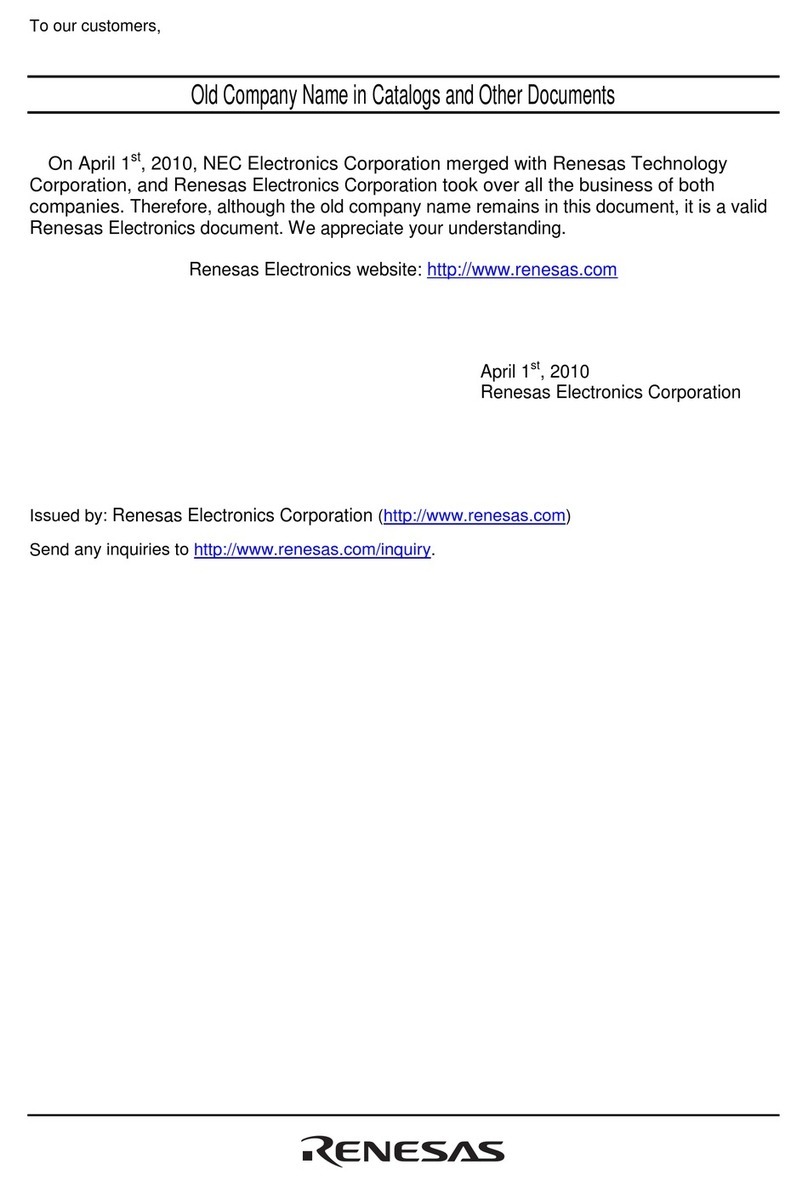
Renesas
Renesas PROM Programming Adapter PCA7408 user manual
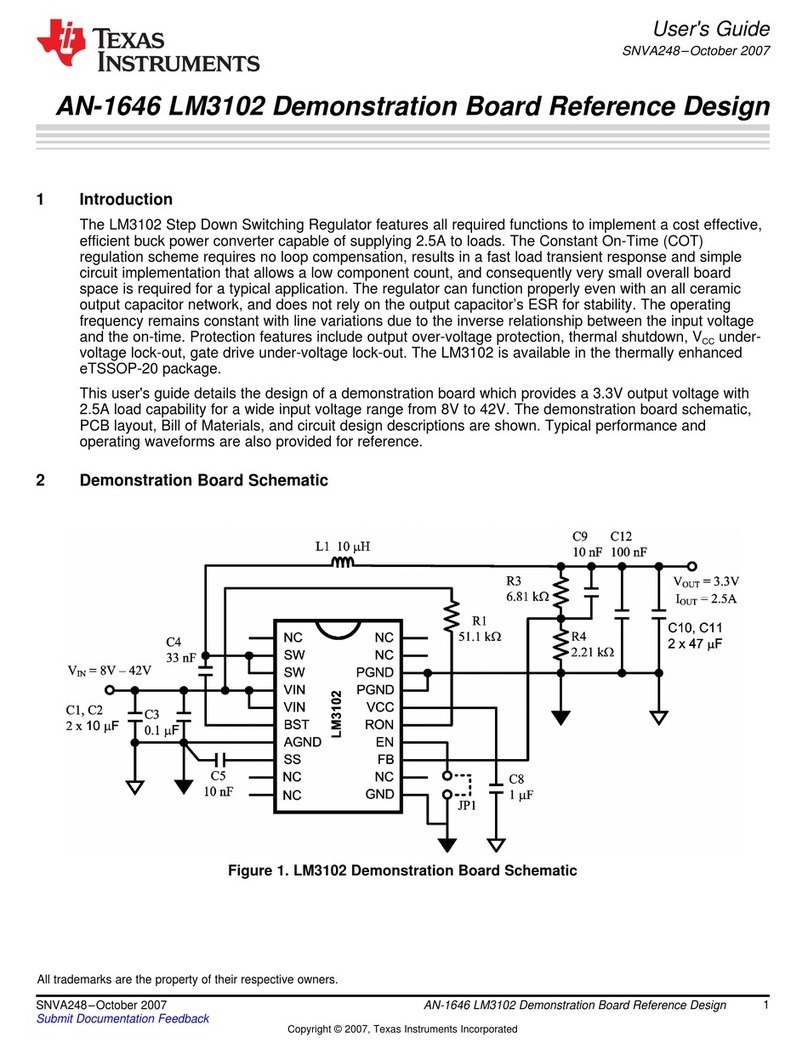
Texas Instruments
Texas Instruments AN-1646 user guide
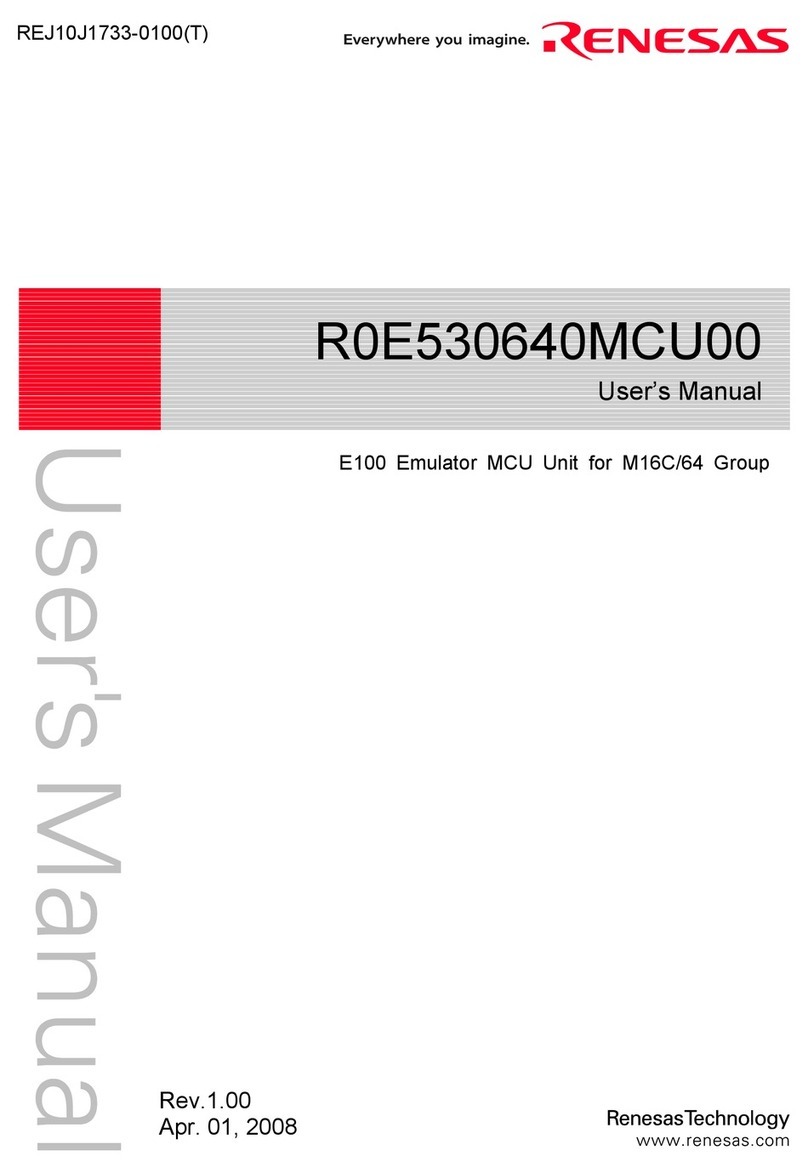
Renesas
Renesas M16C/64 user manual
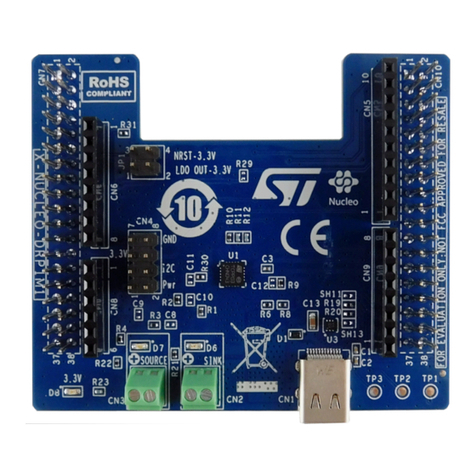
ST
ST X-NUCLEO-DRP1M1 user manual

Baracoda
Baracoda USB Plug user guide
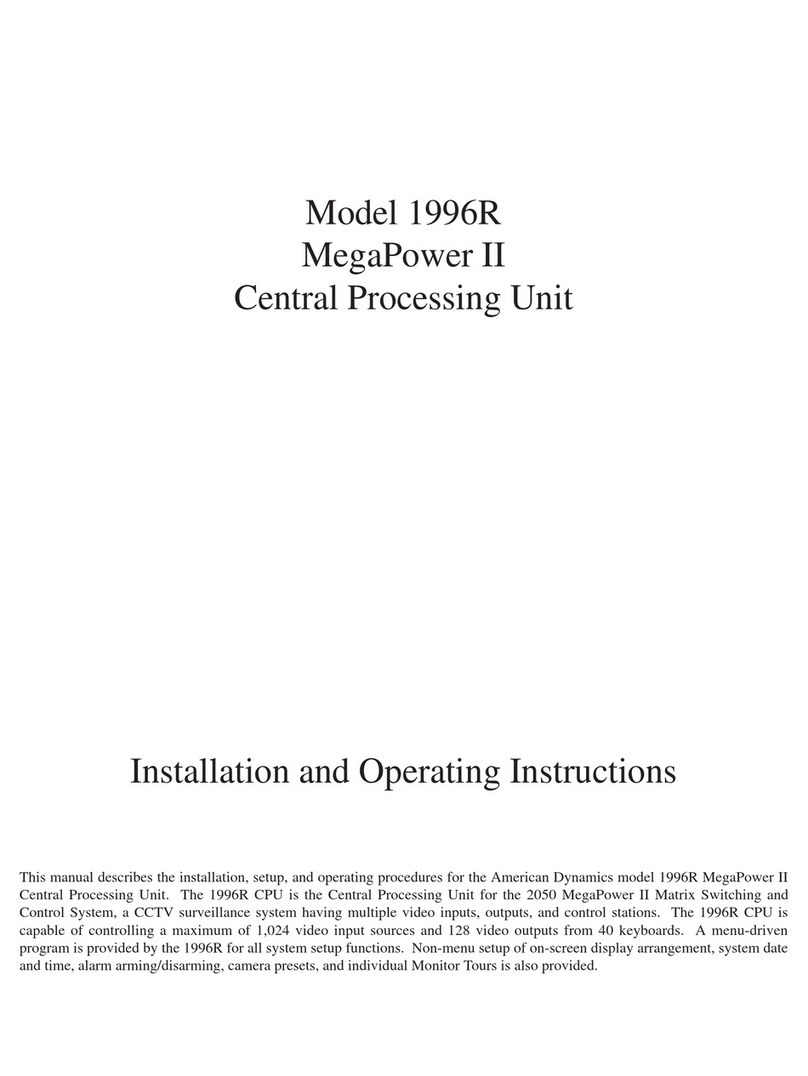
American Dynamics
American Dynamics MegaPower II AD1996R Installation and operating instructions
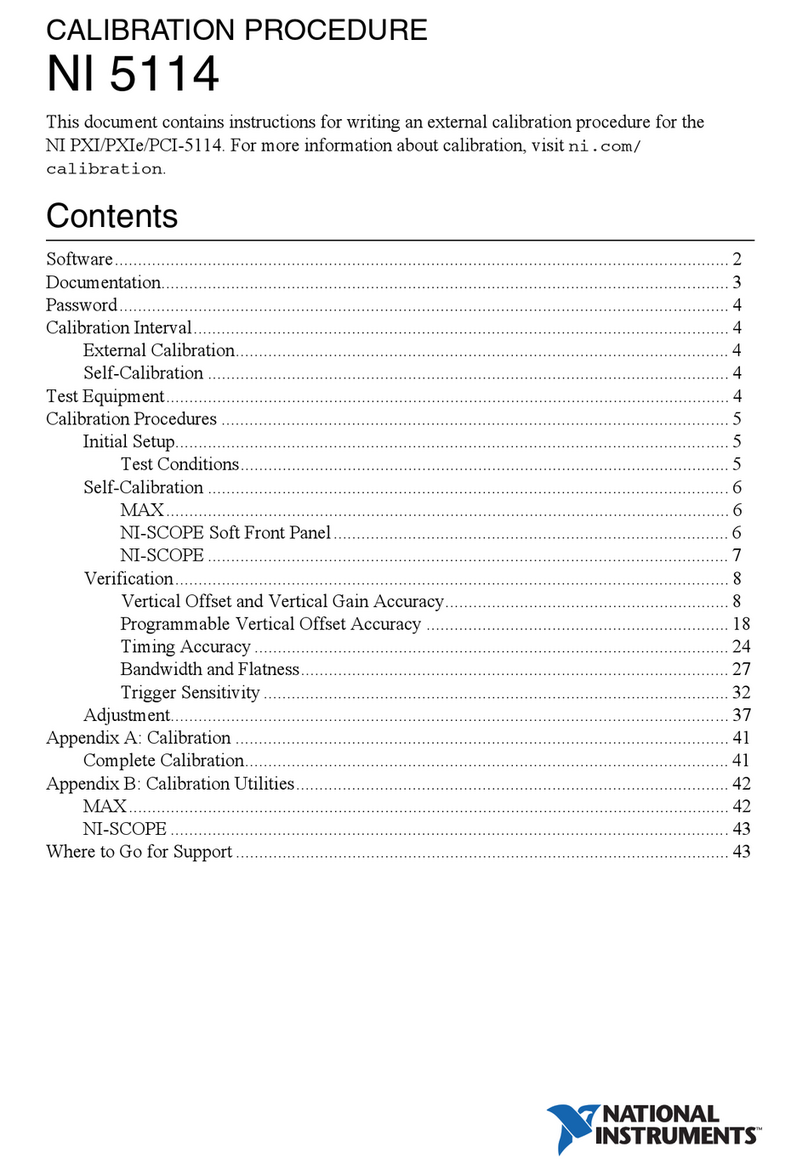
National Instruments
National Instruments PXI manual
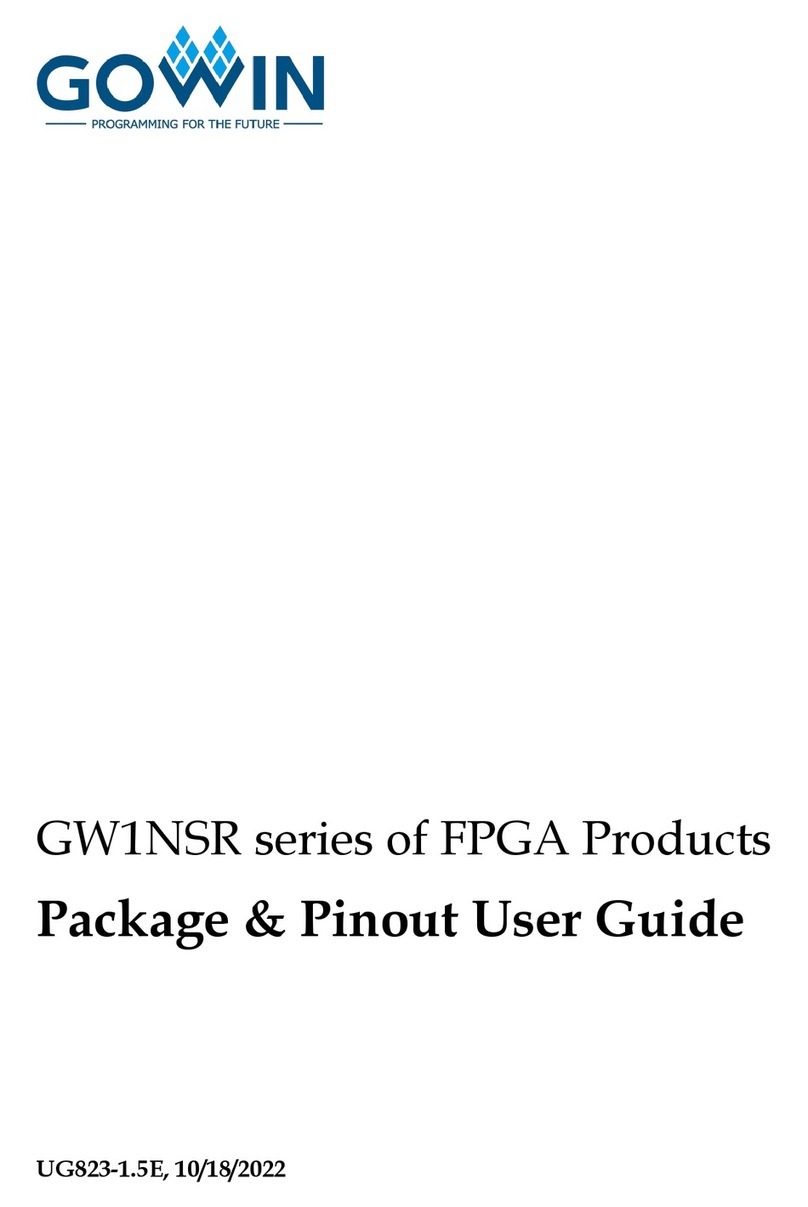
GOWIN
GOWIN GW1NSR Series user guide
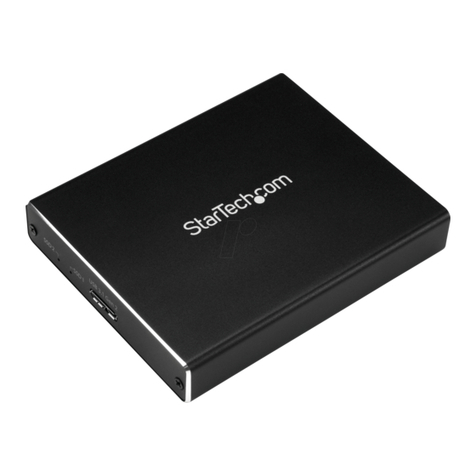
StarTech.com
StarTech.com SM22BU31C3R quick start guide

Middle Atlantic Products
Middle Atlantic Products ESSEX FANTOP-138DC instruction sheet
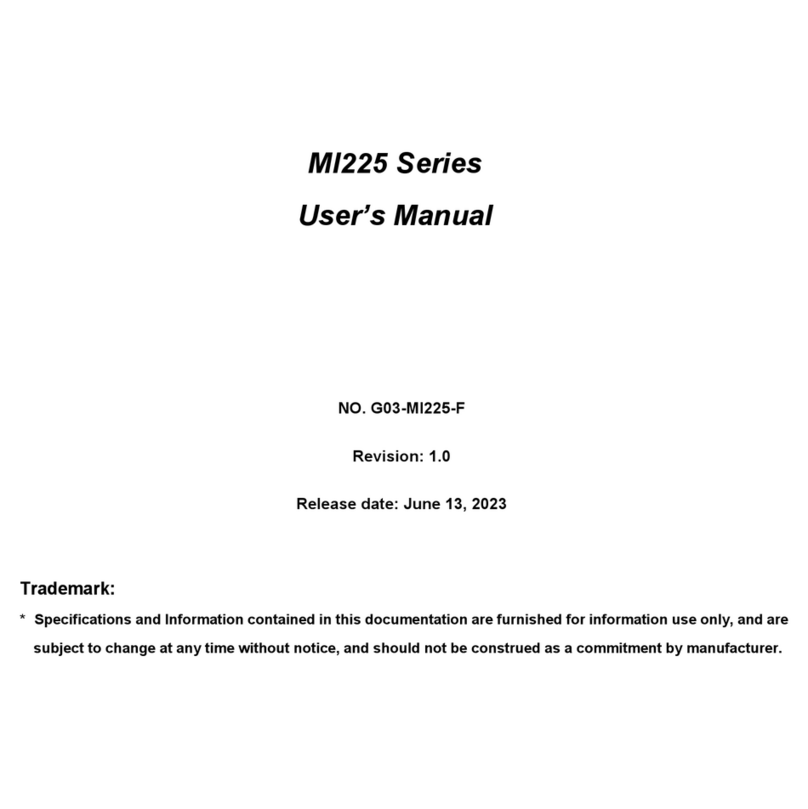
JETWAY
JETWAY MI225 Series user manual
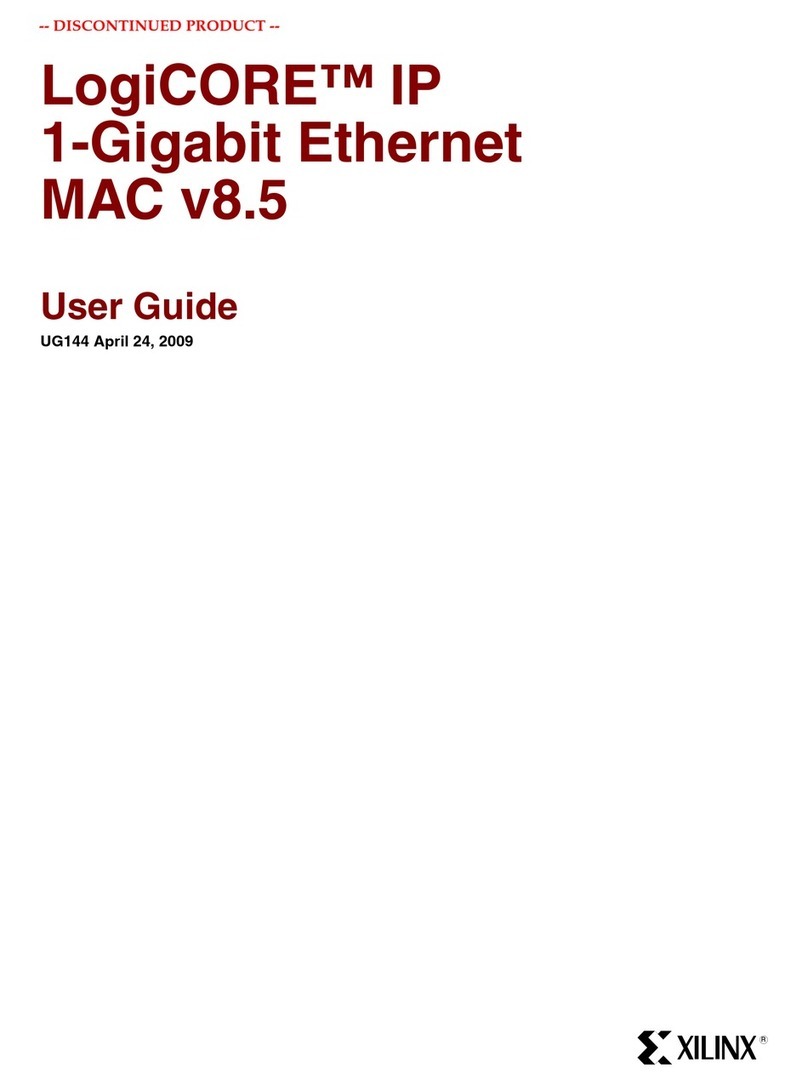
Xilinx
Xilinx LogiCORE IP MAC v8.5 user guide
